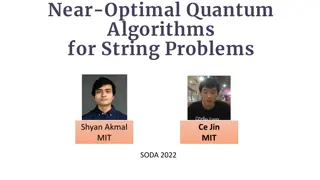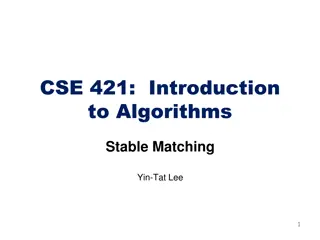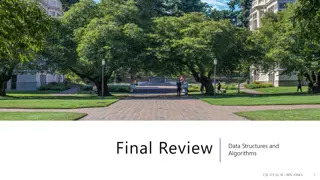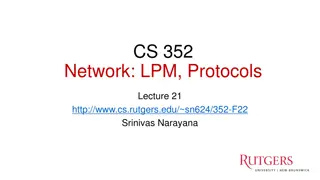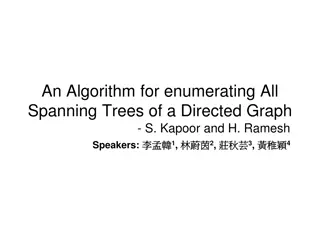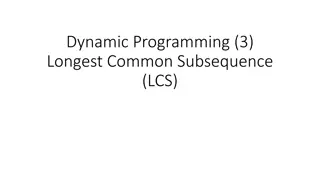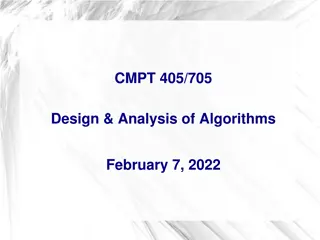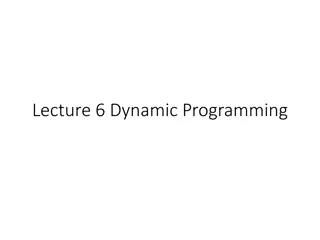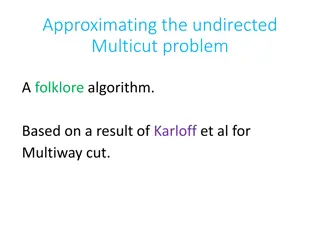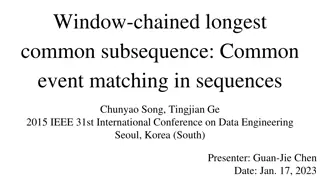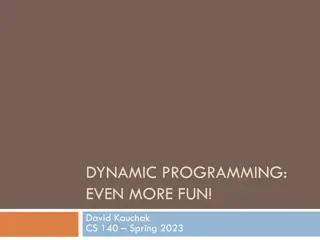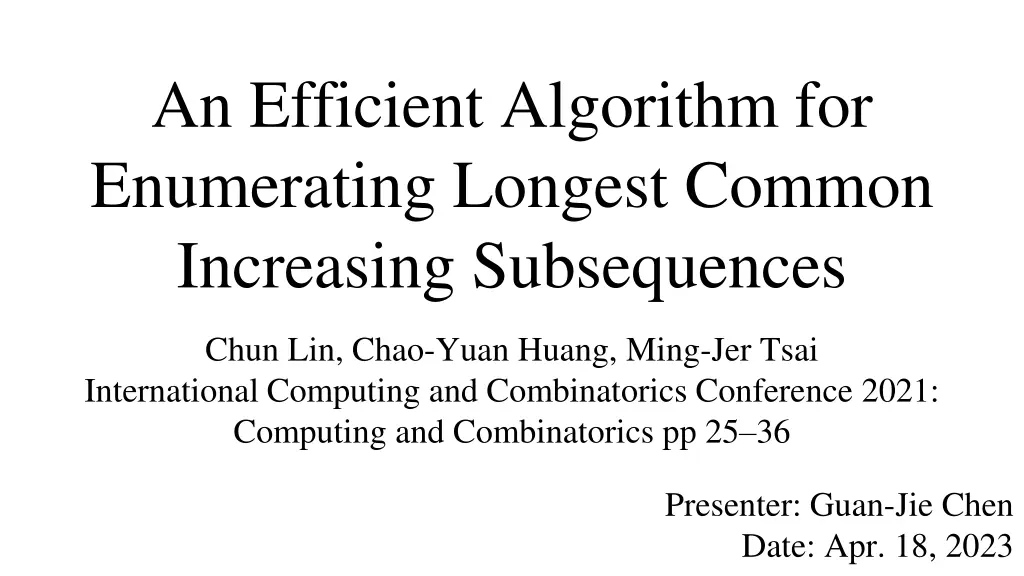
Efficient Algorithm for Enumerating Longest Common Increasing Subsequences
"Discover an optimal algorithm for finding Longest Common Increasing Subsequences, combining classic LIS and LCS problems. The proposed approach boasts implementation simplicity and optimal time complexity. See detailed steps and results for sequence A and B."
Download Presentation

Please find below an Image/Link to download the presentation.
The content on the website is provided AS IS for your information and personal use only. It may not be sold, licensed, or shared on other websites without obtaining consent from the author. If you encounter any issues during the download, it is possible that the publisher has removed the file from their server.
You are allowed to download the files provided on this website for personal or commercial use, subject to the condition that they are used lawfully. All files are the property of their respective owners.
The content on the website is provided AS IS for your information and personal use only. It may not be sold, licensed, or shared on other websites without obtaining consent from the author.
E N D
Presentation Transcript
An Efficient Algorithm for Enumerating Longest Common Increasing Subsequences Chun Lin, Chao-Yuan Huang, Ming-Jer Tsai International Computing and Combinatorics Conference 2021: Computing and Combinatorics pp 25 36 Presenter: Guan-Jie Chen Date: Apr. 18, 2023
Abstract (1 / 2) The longest common increasing subsequence (LCIS) problem is the combination of two classic problems in algorithms: the longest increasing subsequence (LIS) problem and the longest common subsequence (LCS) problem. In this paper, we propose an algorithm that finds every LCIS of two sequences a, b of length n in O(n + + Ia) time and space, where denotes the size of the alphabet set and Iathe total number of increasing subsequences contained in a (thus, the running time is output-sensitive). 2
Abstract (2 / 2) Our algorithm employs the trie and some simple data structures, and thus is implementation-wise simple. In addition, it can be proved that our algorithm is optimal in time complexity when log2n. 3
Purpose Finding longest common increasing subsequence between A & B A = [1, 4, 1, 0, 3] B = [1, 4, 3, 1, 3] 4
Longest Increasing Subsequence of A (1 / 7) (Initialization) A = [1, 4, 1, 0, 3] Cnt 0 1 1 2 2 0 3 1 4 1 5
Longest Increasing Subsequence of A (2 / 7) A = [1, 4, 1, 0, 3] Cnt 0 1 1 1 2 0 3 1 4 1 6
Longest Increasing Subsequence of A (3 / 7) A = [1, 4, 1, 0, 3] Cnt 0 1 1 1 2 0 3 1 4 0 7
Longest Increasing Subsequence of A (4 / 7) A = [1, 4, 1, 0, 3] Cnt 0 1 1 0 2 0 3 1 4 0 8
Longest Increasing Subsequence of A (5 / 7) 3 l1001= 2 T1001 A = [1, 4, 1, 0, 3] Cnt 0 0 1 0 , A1001 2 0 3 1 4 0 9
Longest Increasing Subsequence of A (6 / 7) A = [1, 4, 1, 0, 3] Cnt 0 0 1 0 2 0 3 0 4 0 3 10
Longest Increasing Subsequence of A (7 / 7) A = [1, 4, 1, 0, 3] Cnt 0 0 1 0 2 0 3 0 4 0 11
Longest Common Increasing Subsequence (1 / 3) B = [1, 4, 3, 1, 3] 12
Longest Common Increasing Subsequence (2 / 3) B = [1, 4, 3, 1, 3] 13
Longest Common Increasing Subsequence (3 / 3) B = [1, 4, 3, 1, 3] 14
Time Complexity O(n + + Ia) initialization: O(n + ) : the size of the alphabet set Ia: the total number of increasing subsequences contained in A Ia 2 15


